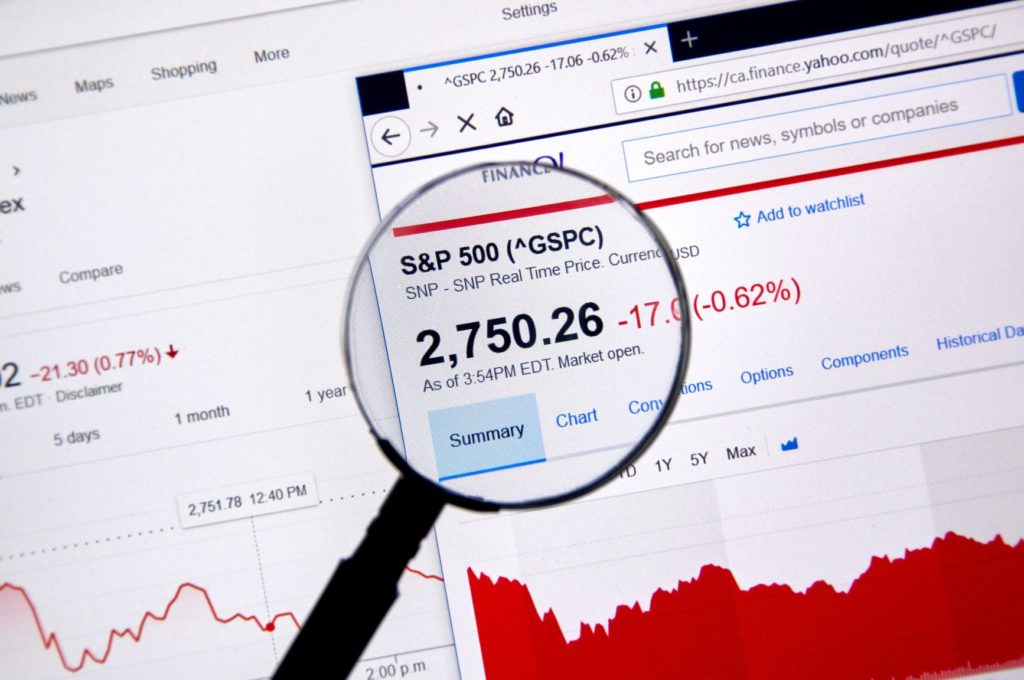I got my start in financial markets in an interbank dealing room, where volatility was our friend. Sure, when things were jumping about, there was a chance to lose money, but in the opposite situation, when nothing was happening, there was no way to make any. We preferred to take our chances.
Even for me, though, there are times when the volatility in the oil and stock markets give me pause.
Over my years in the market, I learned some techniques that make wild market swings less daunting and help you to avoid making major mistakes at those times that can do long-lasting damage to your account.
There are different approaches for longer-term investors and shorter-term traders but there are some common themes.
Common Themes

The key to managing volatility is managing your emotions. Volatile markets are scary, so the first thing to do is to devise a plan before fear takes over.
That is advantageous on several levels.
Just thinking about what you will do when the market falls forces you to acknowledge that at some point, it will. That way, when it does, the inevitable correction doesn’t come as a shock. Expected things can be worrying, but it is the unexpected that produce fear.
In addition, it is far better to form a plan when things are calm than to react when they are not. The first casualty of fear is logic. It is hard to think things through when in a panic, but not that hard to execute a previously thought out plan.
These are the general basics of preparing for volatility, but the specifics of the plan vary depending on your style of trading or investing, in large part because the aims are different.
Long-Term Investors
If you are a long-term investor, you are trying to stop yourself from doing too much. In the history of the stock market, there has been only one time when stocks lost money over a rolling twenty-year period. If you bought at or near the top of the bubble that preceded the crash of 1929, it took more than twenty years to recover your losses, but otherwise the long-term trajectory of equities has always been upward.
Every investor is aware that they should, in theory, buy low and sell high, and have probably heard the wisdom of Warren Buffett, who famously said that we should be fearful when others are greedy, and greedy when they are fearful. The problem is that by the time a downward move has enough momentum to squeeze individual investors out of long-held positions, it is usually near the bottom. As a result, they often end up doing the opposite of what they know they should.
The fear compels you to do something and selling is the response.
You can, however, stop that by doing something else early on in a downward move. If, when you feel the first twinge of worry, you buy something that will benefit from a drop, it is a lot easier to avoid big mistakes. It enables you to focus on the profit you are making from that one position, not the losses from the others, for one thing. Then there is the knowledge that you saw the drop coming, again making it far less likely that you panic.
So, if you should buy something, the next obvious thing to ask is what that thing should be.
What to Buy
There are a number of options, and which you choose really comes down to personal preference. The most important thing, however, is that whatever you decide on, it should incorporate some leverage.
Under normal circumstances, leverage is not something that long-term investors should get too involved with. Yes, it exaggerates potential profits, but it also exaggerates potential losses. In this situation though, where it is essentially being used as a hedge, it can be useful.
The idea is to try to give enough of a return to kill the urge to make more drastic moves in your account, but without risking too much in the process. That can be achieved by buying a leveraged product that will gain on a market decline and doing so with a fairly tight stop-loss order attached.
Some things to consider would be the Direxion S&P 500 3X Bear ETF (SPXS) or the iPath S&P 500 VIX ETN (VXX). SPXS is designed to multiply moves in the S&P 500 by three, but in the opposite direction. If the market goes down, SPXS goes up and vice versa.

VXX is a little more complicated, as it tracks the VIX, a measure of volatility in the options market. If expected, and actual volatility rises, so does VXX. The leverage comes from the nature of the VIX and is greater than that inherent in SPXS. When the S&P 500 lost around thirteen percent at the end of February, for example, VXX gained around eighty-five percent.
As tempting as that sounds, it is important to remember that losses are multiplied too when leverage is used. That is why it is important to set a stop loss order on things like this and, more importantly to stick to it. That may lead to a small loss, but if the downward move reverses, any loss will be more than offset by the gains in the rest of your portfolio.
The aim of this strategy is not really to make money off what you buy. It is to satisfy the urge to do something, and thereby to avoid being squeezed out of your primary positions at a bad time.
Short-Term Traders
For traders, almost the exact opposite is true. The purpose of a plan to deal with volatility is to enable you to do something, not stop you.
Moving markets are an opportunity for traders, but it is easy to get paralyzed by fear and watch all that opportunity disappear. The answer is to adopt a strategy that minimizes risk but still gives opportunity for good profits.
The best way to achieve the risk management part of that is to keep initial positions smaller than you would under normal circumstances. That way stops can be set far enough away to allow for the volatility but will not do serious damage to your account balance should you make a wrong decision.
To maximize potential profit when you are right, you should preset a level at which you will add to that small position. When you do, though, you should also reset your stop loss order to keep maximum losses to around the same dollar amount as you had initially.
Volatility is a fact of life. It comes at times and can be difficult to deal with whether you are a long-term investor or a short-term trader. In both cases though, if you formulate a plan beforehand or adopt a logical one when it comes, it can be manageable.
Cheers,
M

